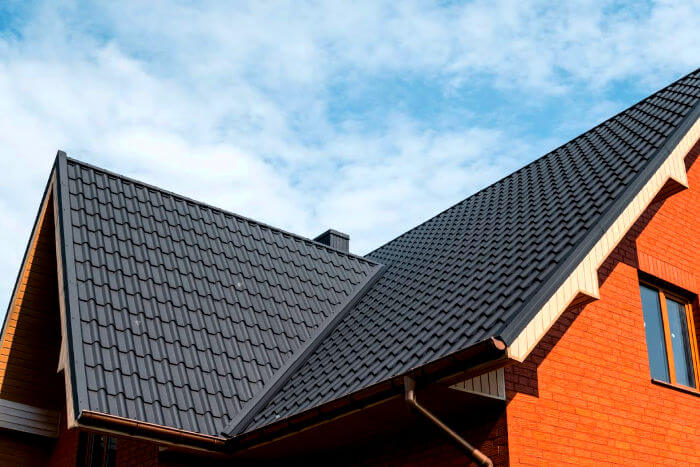Water Will Find a Method
Water marks on a ceiling, or worse, dripping water, might have you worried that your whole roofing remains in tatters. But even if there's a leak does not suggest your roof will certainly call for an enormous quantity of repairs. Occasionally quiting it is as straightforward as filling a crack with caulk, replacing a couple of tiles, or setting up some flashing-- a membrane layer or layer of metal that provides a mechanical obstacle to reroute water at edges, gaps, gaps, as well as other spots prone to leaking.
Fallen Montclair Roofing tree limbs, hail storm, and also even wind can loosen or eliminate tiles. Harmed blinking is Montclair Roof Repair an additional common offender. Also rubberized boots around plumbing pipes, or with poorly set up satellite dishes or solar panels can cause isolated leaks. To determine what type of leakage you've got on your hands, first try to trace it to its beginning.
Seeking Leaks
It's most convenient to discover a leakage when it's raining outside. Keep in mind that water typically collects at a place that's different from where it's going into-- it generally runs down the size of a rafter or stud and only leaks once it gets to a nadir.
In an incomplete attic room, the framework shows up, so simply start at the leakage as well as look along the size of any wood mounting that leads to that point, to see if you find a path of water that originates higher up on your roofing. In a finished attic room, you'll require to utilize a portable tool called a stab saw to cut away any type of drywall that obstructs your view. Once you think you have actually located the beginning, look at top of the roofing (you can do this securely from the ground with a pair of field glasses) to see if you can identify any type of evident culprits, like missing http://query.nytimes.com/search/sitesearch/?action=click&contentCollection®ion=TopBar&WT.nav=searchWidget&module=SearchSubmit&pgtype=Homepage#/Montclair Roofing out on roof shingles, or worn out flashing near a chimney.

If you can not situate the leakage on your own, a licensed roofing contractor can perform an examination and also make suggestions concerning whether repair service or substitute is required. Even if you're able to find your own leak, you'll wish to leave the repair work task to a pro-- climbing up onto your roofing with a high expansion ladder is a dangerous work. The majority of leakages can be stopped if they're limited to a couple of areas. If, nevertheless, you're experiencing repeating leaks, as well as your roofing system runs out guarantee, it may be time for a brand-new roofing system. The money you would certainly spend on numerous short-term solutions is probably better related to a new roof covering with a lengthy warranty.
Other Warning Signs
You don't have to wait for leaks to appear before you think about fixings to your roofing system, though. Missing out on, damaged, or crinkling shingles can all be indications of leakages to come. As well as the age of your roofing system itself can be a guide-- house owner's insurance provider generally presume an asphalt shingle roofing system will last about two decades, as well as some insurance providers won't provide coverage if your roof covering is older than that. If your roofing was put on by the previous owner of your residence, a roofing contractor or an accredited home assessor can normally supply a harsh quote of the age, based upon the problem of the roof shingles.
Even without leakages or evident indications of damages to the roofing, it can make good sense to change an out-of-warranty roof covering that's greater than two decades old. That's because once a leak creates, it can do severe damages to the timber sheathing under the roof shingles. And if that sheathing comes to be distorted or rotted, changing it can add numerous thousand bucks to the total expense of your brand-new roofing when you do navigate to replacing it. The image listed below shows the various layers involved in a normal roofing.
Insurance policy Insurance coverage
Prior to you hire any person to work with your roofing system, call your homeowner's insurance company to examine your insurance deductible and also insurance coverage for roof covering fixings or substitute. You'll wish to evaluate your out-of-pocket costs versus the price of replacing your roofing system entirely. Think about any kind of resulting increase in your costs as well-- it might make more sense to simply cover the cost yourself.
Usually, house owner's insurance plan may cover, or contribute towards, the repair work of separated leakages, yet will not cover the cost of replacement. The majority of insurance firms will certainly send an adjuster to supply a quote for the repair service, as well as plans commonly cover fixings to the roof covering, along with any kind of damage to the framework, drywall, or floor covering that arises from a dripping roofing. If you do obtain a payout from your insurance provider, you can utilize that cash to make the particular repair services, or use it toward the cost of a complete substitute.